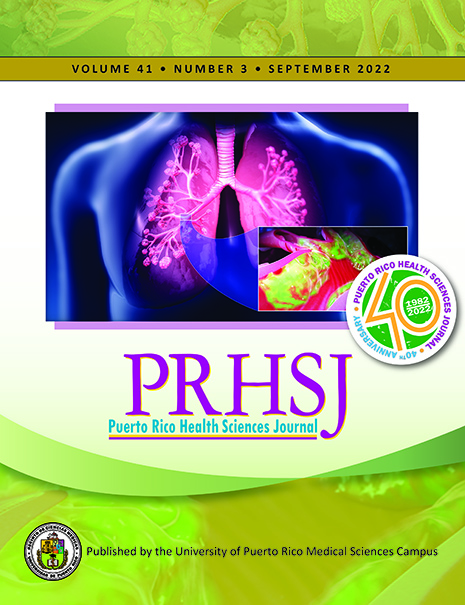Abstract
Objective: To evaluate the impact of sustained virologic response (SVR) on liver stiffness, as measured by transient elastography (TE), in Hispanic patients treated with direct-acting antivirals (DAAs) in the outpatient clinics in the Veterans Affairs Caribbean Healthcare System. Methods: We included hepatitis C virus (HCV) patients treated with DAA regimens from 11/2017 through 06/2019. Patient demographics and variables such as body mass index, HCV genotype, and treatment regimen were collected. The patients had a TE measurement before treatment initiation, and a repeat study 6 to 9 months after the achievement of SVR. A comparison between pre and post-treatment TE scores was performed via a paired t test. Results: Forty-three subjects met all the inclusion criteria and completed a posttreatment TE. Most of the subjects were infected with genotypes 1a or 1b. Six to 9 months post SVR, we measured liver stiffness and found a statistically significant reduction in TE score (P value = .0003). The pretreatment median TE score was 10.2 kPa. On a repeat TE study at 6 to 9 months post-treatment, our subjects had a median score of 7.2 kPa. Conclusion: The eradication of HCV infection with DAAs is associated with improved TE scores. Fibrosis-stage reduction was more frequent in those who had stage 4 fibrosis prior to treatment. These results suggest that achieving SVR may spare patients from future clinical decompensation and complications. Adequate screening of this potentially deadly chronic infection can lead to early therapy with DAAs and the significant regression of fibrosis in this kind of patient.
Authors who publish with this journal agree to the following terms:
a. Authors retain copyright and grant the journal right of first publication with the work simultaneously licensed under a Creative Commons Attribution License that allows others to share the work with an acknowledgement of the work's authorship and initial publication in this journal.
b. Authors are able to enter into separate, additional contractual arrangements for the non-exclusive distribution of the journal's published version of the work (e.g., post it to an institutional repository or publish it in a book), with an acknowledgement of its initial publication in this journal.
c. Authors are permitted and encouraged to post their work online (e.g., in institutional repositories or on their website) prior to and during the submission process, as it can lead to productive exchanges, as well as earlier and greater citation of published work (See The Effect of Open Access).
